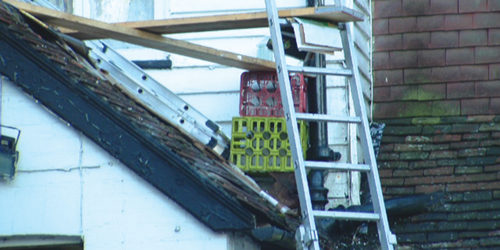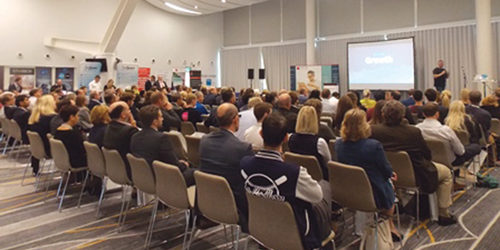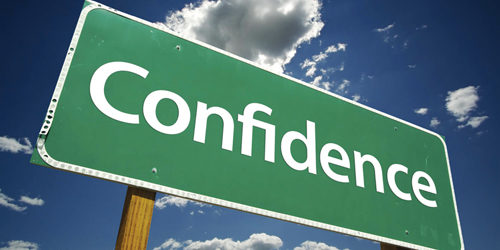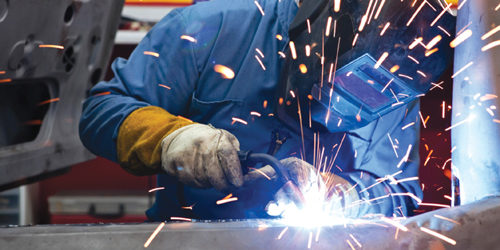
Health and Safety is hugely important as we all have a responsibility to ensure people are safe when they are at work, but the H&S industry gets a lot of bad press when over-officious rules are set and jobsworth officials get in the way of getting things done. For Rob Slater, Managing Director of the Clearwater Safety Group, it’s all about common sense, as he tells Ian Trevett.
Rob Slater has been in the Health & Safety (H&S) sector for over 12 years, but before that, it is safe to say he didn’t have a great deal of time for those working in H&S. “I spent 20 years or so in the building industry, from plasterer up to site manager,” says Rob. “In those days the only experience I had of Health & Safety officers was that they were there to stop me from working. That was their sole purpose in life!
“I remember when I was plastering the ceilings at Victoria Place in Tunbridge Wells, which were about four metres high. As soon as I got up on my tower to plaster a section of the ceiling, the site safety guy was there in a flash and said, “You can’t have a tower here, it’s a fire exit.” I was on a mobile tower which could easily be pushed aside in the event of a fire.
Instead I had to straddle the tower and a ladder, which was a far more dangerous thing to do. The chance of me falling and breaking my leg was far greater than there being a fire and the exit being blocked. It seemed to be a complete lack of any common sense.
“People see a fire exit and think it’s got to be clear at all times, which is correct; but you have to live in the real world. It’s down to risk assessment and reality. This tunnel vision mentality is what gives the whole industry a bad name.”
Now, he is a consultant in Health and Safety, and this kind of experience has shaped how he approaches his work:
“I have plenty of experience of the real world and I bring that to what I do now. I’m not some kind of stuck-up academic who’s purely quoting the law.
I say, “Right, this is what we’ve got to achieve. Let’s work out how can we achieve it, but also make sure you are safe and working within the law.” This approach goes down very well because the people I work with need to build or make something. What they don’t want to hear is “You can’t”, because they’ll do it anyway. Then they end up hurting themselves – or worse.
“All people ever hear about are the most ludicrous examples of H&S being misused. There’s the “bonkers conkers” story where kids were told they couldn’t play conkers at school ‘because of H&S’. It was on one day at one school, and the story was blown out of all proportion. You will easily find people who insist on a risk assessment about doing your shoes up. And that’s where this sort of myth starts.
“The Health and Safety Executive (HSE), the organisation responsible for regulation and enforcement of workplace health, safety and welfare, now have an initiative called Myth Busters, where you can actually write in to them and say “I’ve been told I can’t bring cups of coffee in because it’s Health & Safety.” They can debunk these ideas.”
Rob started out in his new career in 2004, after he attended a H&S course. A few days afterwards, he saw an advert for a trainee safety consultant role and applied for the job. Eighteen months later he struck out on his own. “I had qualified with the Nebosh General Certificate and wanted to learn more, and study for the Diploma. I then discovered that this would make me more qualified than the company directors, and they didn’t want to support me in further learning so I decided to go out on my own. I still need to keep my knowledge up to date, so right now I’m halfway through a Master’s degree in Occupational Health & Safety and Environmental Management. It is a really interesting course that opens your eyes up to so many different avenues.”
“Complying to Health and Safety requirements is very important for all businesses in all industry sectors. In fact, the legal requirements kick in quickly even for smaller companies.
“If you have five or more employees you’ve got to have a policy, something written down,” confirms Rob. “How detailed it needs to be depends on the business and what it does. If there are five of you sitting in an office, it’s completely different to five of you welding. It needs to be proportionate to what you do”.
“The Health and Safety Policy might just be half a dozen pages or it could be 30. I have been to companies where they have a book which is three or four inches thick and they’ve never opened it. There’s no point giving a company a policy document the size of War and Peace written in Latin as they’ll never ever read it. It has to be useable. An employer or employee should be able to read through it and understand it.” Rob prides himself on the clarity and ease of use of his documents, and many of Clearwater Safety’s clients will testify to that.
“Employers are also required to have access to a competent person with regards H&S. That doesn’t mean they have to be in-house. As a consultant, I am their go-to person - they can phone or email me and I’ll give them the answer.
“Frequently, we are contacted by companies who are trying to get onto tender lists and need help getting through the assessment process, often from one of several pre-qualification companies such as CHAS or Constructionline. For a small company this is often a painful process because they’ve got to tick boxes that don’t fully apply to them. The whole process is often confusing to the business owners and is very time-consuming. So I can help with this.
“Another area we cover is fire safety. Since 2005 it has been a legal requirement to have fire assessments carried out on all non-domestic premises which includes offices, shops, factories and common areas in blocks of flats. We will go in and check to make sure that alarms are serviced and fire exits open etc.
“Finally there is the environmental part of our work. We carry out quite a few asbestos management surveys for conveyancing solicitors, and can also help companies work towards their ISO 14001 environmental accreditation.
“We have many companies who have been with us from the beginning and they just keep renewing every year, which confirms their appreciation of the way we work with them. I enjoy meeting new people and I find that all of our clients like the way I approach H&S.
“I’ve always had a bent for law, it’s the preciseness of the words that I like. When companies send me documents to review, I can skim through them and my eyes are almost naturally drawn to typos or to regulations that are wrong.
“A new client recently sent me through their existing policy documents to check for compliance before a PQQ application. I said “It’s not too bad I’ve seen worse, but there are a huge number of references to regulations that went out 20 years ago. And if I’m picking that up, then the CHAS/Constructionline assessors will also see them and reject it.”
I wrote a new set of policy documents and they were awarded accreditation at the first submission.”
Health and Safety can be a minefield, and something that companies dread tackling. It’s no surprise that Clearwater safety Group is continuing to grow as Rob has that key asset: he has lived in the ‘real world’ and he understands exactly what companies want and need.
info@clearwater-safety.co.uk
01825 710002
clearwater-safety.co.uk






